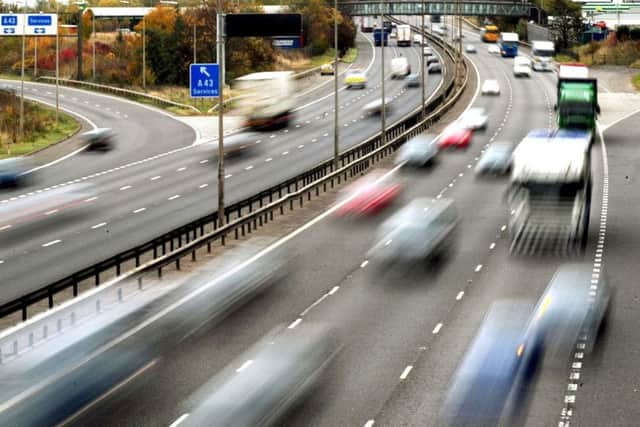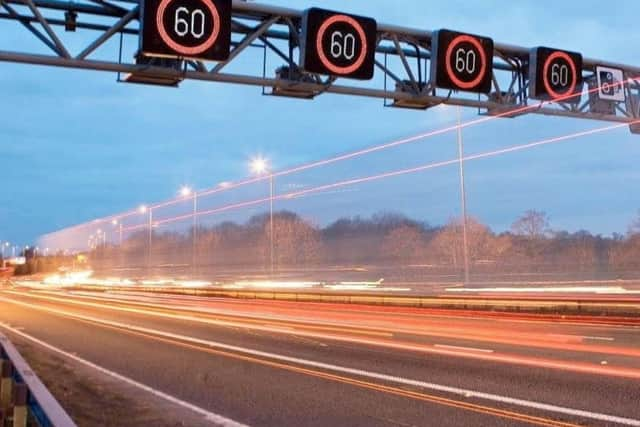Halt smart motorways now before motorists like my constituent are needlessly killed on ‘death trap’ roads – Sarah Champion


Jason had been involved in a minor collision on the M1 in South Yorkshire, but in March 2017 the hard shoulder on that section of motorway had been converted into a full-time running lane.
Advertisement
Hide AdAdvertisement
Hide AdWith no emergency refuge in sight, Jason and his fellow motorist were forced to stop in a live lane to exchange details.


A steep bank immediately behind the safety barrier meant there was nowhere to move off the road, and instead they were left exposed. A lorry hit one of the stationary vehicles, killing them both instantly.
The safety features promised when the motorway was converted have still not been installed. Jason is one of the growing number of victims of so-called “smart motorways” on which the flow of traffic is controlled by remotely adjustable speed limits.
Advertisement
Hide AdAdvertisement
Hide AdSpecifically, Jason was killed on the all-lane running, or ALR, motorway on which the hard shoulder has been permanently removed. Tragically, Jason is not the only victim of that ill-conceived scheme.


That same 16-mile section of the M1 has seen five fatalities in just 10 months. Nationally, 2018 figures show 107 deaths across the whole of our motorway system and – let me repeat – five fatalities in the past 10 months, in near-identical circumstances, on 16 miles of road. I acknowledge that ALR schemes can deliver capacity improvements, but they do so at the cost of motorists’ lives.
Hazards presented by the removal of the hard shoulder are manifold. It allows stricken motorists to stop in relative safety, outside the flow of traffic. But 38 per cent of all breakdowns on ALR motorways took place in live lanes, not in refuges. Even having refuges, therefore, does not keep people safe.
Advertisement
Hide AdAdvertisement
Hide AdReaching safety is particularly challenging in newer schemes, where refuges are being spaced further and further apart. The M42 active traffic management pilot placed refuges 500 to 800 metres apart, but in newer ALR schemes that has increased to roughly 2,500 metres. To be explicit, someone needs to travel 2.5 kilometres, or just over 1.5 miles, with a blow-out or an overheating engine, or after being in an accident, before being able to get out of a live traffic lane. The greater the distance between refuges, therefore, the less likely it is that a motorist will be able to reach safety. Motorists are instead left exposed, stopped in live traffic. I can only assume – I am sorry to say this – that that decision was made to save the Government money.


The smart motorway is meant to be smart, and its systems should come into play – for example, to close lanes to traffic automatically – but that, of course, relies on the stranded vehicle being detected. It pains me to say, however, that the vast majority of England’s smart motorways are unable to deliver on that. Almost all smart motorways are underpinned by Highways England’s MIDAS – motorway incident detection and automatic signalling – system which, by monitoring traffic flow, allows congestion to be managed. But the system has a significant and life-limiting flaw: it is unable to identify a lone stationary vehicle.
A 2016 Highways England report found that detecting a stranded vehicle took an average of 17 minutes. Safety is compromised still further by Highways England allowing up to three minutes to close a lane once a stationary vehicle has been detected. In Jason Mercer’s case, detecting his stationary vehicle took more than six minutes, and the lane in which he was stranded was only closed after the crash that claimed his life.
Yesterday, it came to light that the AA will no longer carry out roadside assistance on all-lane running motorways due to serious safety concerns. How bad does it have to get before the Minister will act? Rotherham Metropolitan Borough Council, in response to the consultation on the conversion of junctions 32 to 35a of the M1, warned starkly that “from an operational perspective, the emergency services suggest that the risk of collisions involving stationary vehicles...is an unacceptable one which will have serious and potentially fatal consequences”. Jason Mercer was one of those fatal consequences. Last year, there were nine fatalities on smart motorways.
Advertisement
Hide AdAdvertisement
Hide AdThere is no evidence that ALR can ever be delivered safely. I therefore strongly believe the Government must stop the roll-out. Until the obvious risks of removing the hard shoulder are addressed, existing schemes should revert to traditional motorways from today. I cannot change the past. I cannot bring Jason Mercer back to Claire. But it is in the Minister’s gift to stop more deaths.
Sarah Champion is Labour MP for Rotherham. This is an edited version of her speech on smart motorways.